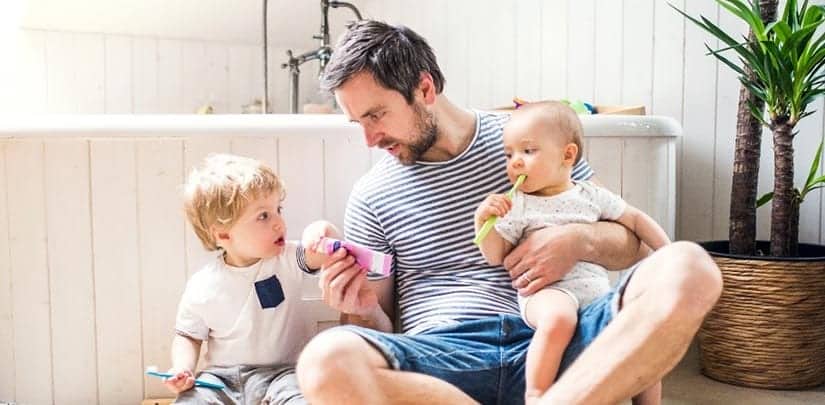 Blog by: Dr Jill Jenkins is a co-founder of Jenkins & LeBlanc and has been a pediatric dentist for 15 years and a mom for 19 years. She loves to build relationships with children and their families through oral health education and care. Dr. Jenkins is also heavily involved in organized dentistry as the President of the local Fifth District Dental Association and Vice President of the Kansas Dental Association. She was also honored to receive the Dentist of the Year award this year by the Fifth District Dental Association.
Blog by: Dr Jill Jenkins is a co-founder of Jenkins & LeBlanc and has been a pediatric dentist for 15 years and a mom for 19 years. She loves to build relationships with children and their families through oral health education and care. Dr. Jenkins is also heavily involved in organized dentistry as the President of the local Fifth District Dental Association and Vice President of the Kansas Dental Association. She was also honored to receive the Dentist of the Year award this year by the Fifth District Dental Association.
As parents, there are so many tasks we oversee for the well-being of our children. From challenging diaper changes in infancy, to potty training in the toddler years, the list goes on and on.
Tooth brushing and oral care can often feel like one of those more challenging duties. However, good oral health is a key component to overall health for children.
Here are some age appropriate suggestions for realistic approaches to oral care for infants and toddlers.
Infants
Cleaning the newly grown teeth is incredibly important to keep those teeth strong and healthy throughout childhood.
Once teeth start growing, I recommend wiping the teeth after meals and bottles, using something as simple as the same washcloth you would use to clean a child’s face. This act helps to reduce the contact of foods and liquids (mainly sugars) with the tooth surface.
Additionally, once a day, during your bedtime routine, brush the teeth that are present. While the baby is laid down to change clothes, brush with a grain size amount of toothpaste, which is safe even though your infant can’t spit it out yet.
This age is the best time to start a brushing routine. Sing the same song (ABC’s is a personal favorite, but I get a lot of requests for Baby Shark these days, too!) or recite the same nursery rhyme to develop a comforting routine around brushing.
Just like some babies hate a diaper change, some babies will resist tooth brushing. This doesn’t mean they are in pain or distress. It’s just as important to clean their teeth daily as it is to clean their bottoms from a dirty diaper.
Toddlers
Oh, the joy of an independent toddler! The “I can do it myself” phase was one of the sweetest and most difficult as a mother for me.
Toddlers are testing boundaries on everything, and it’s hard to know where and when to give in. Many kiddos push back against brushing at this age. If you can’t relate, the rest of us mommies are very jealous!
This is usually the age we are potty training, desperately trying anything, often with rewards of sweet treats. Accordingly, twice a day brushing is crucial to good oral health at this age.
I like to focus on evening brushing as my non-negotiable with toddlers, and my morning brushing as a little more child-led. The changing table is still my go-to place for night brushing, but as we outgrew that, I used brushing as an opportunity for snuggle time, too.
Sitting on the sofa with your child laid down with their head in your lap is a great brushing position. I recommend this position as a follow up to a ‘big kid’ brushing attempt, where they can practice brushing, flossing, and spitting, but realistically mainly sucking the grain size of toothpaste off the brush and splashing in the sink.
It takes patience, but remember you are building good lifetime habits. Some families use the bathtub for the child-led brushing time with a little less mess.
Continue Evolving Brushing and Flossing Techniques
However your child “practices,” it is still very important that parents are doing a thorough job of brushing and flossing for your child before bedtime, as they do not have the dexterity to reach all the nooks and crannies of their mouth.
If you get push-back, let them hold one toothbrush to chew on the handle while you brush the opposite side of their mouth with a second toothbrush and alternate sides. The same technique works well for flossing, too.
I find the handled floss holders work the best at this age to reach those trickier back teeth. Harness the power of this newfound independence and thank them for helping you with these jobs. Keep the same song going from infancy for even more consistency and routine.
This style of oral care can offer a rare chance to slow down from the day and glimpse the changes and growth your child is experiencing every day. See this time as an opportunity to connect, rather than another task on your seemingly never-ending list. It may give you a different perspective about the process.
At What Age Should My Child Go to the Dentist for the First Time?
These and many other recommendations will be discussed at your child’s first dental appointment, which the American Academy of Pediatric Dentistry recommends by age one. This early visit allows you the opportunity to personally discuss these challenges with your pediatric dentist and sets the stage for good oral care based on the unique early development of your child.
Ready for your child’s first visit? Schedule an appointment today!
